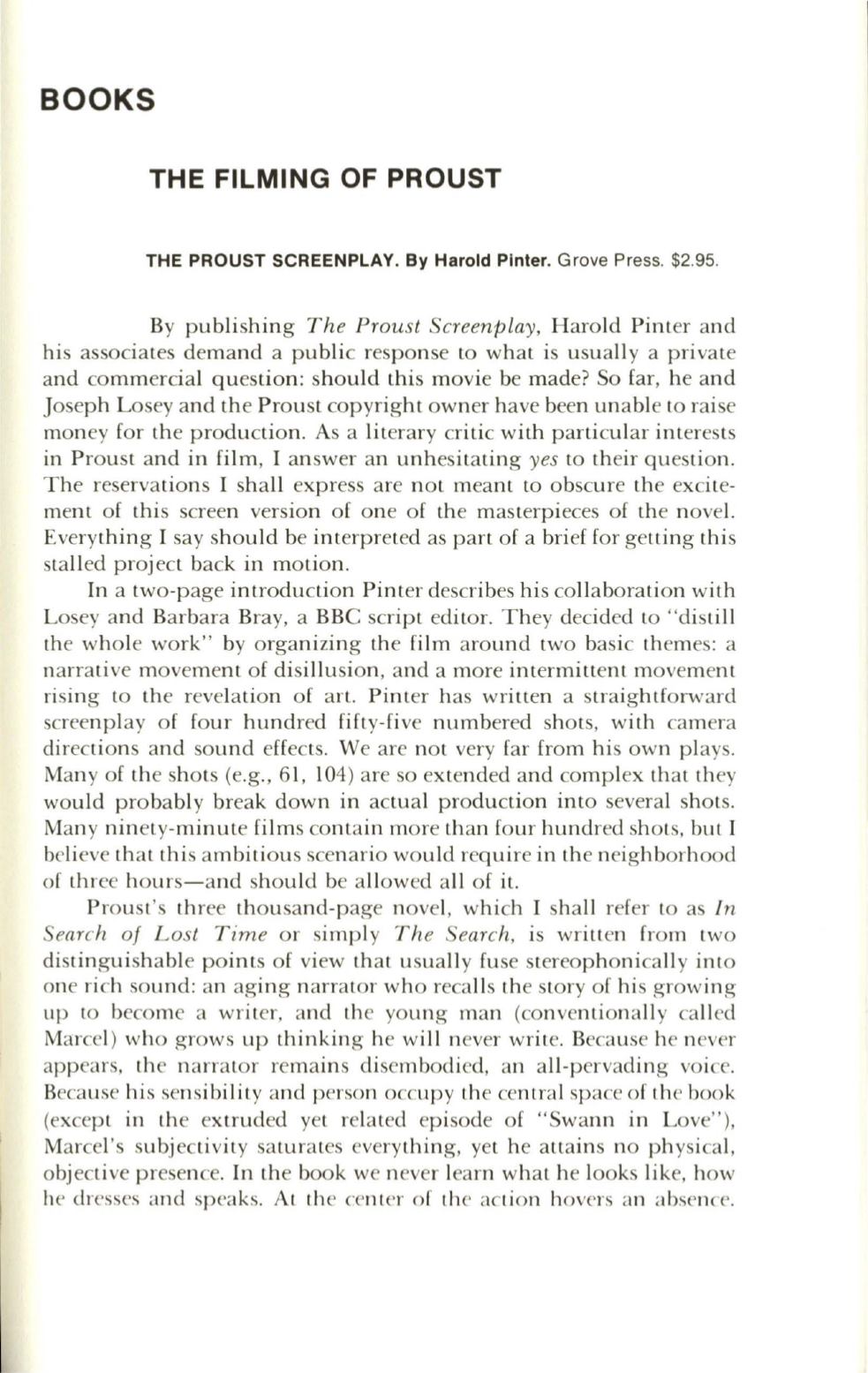
BOOKS
THE FILMING OF PROUST
THE PROUST SCREENPLAY.
By
Harold Pinter.
Grove Press. $2.95.
By publishing
The Proust Screenplay,
Harold Pinter and
hi s associa tes demand a public respon se to wha t is usuall y a pri va te
and commercial question : should thi s movie be made? So far, he and
Joseph Losey and th e Proust cop yri ght owner have been un abl e to raise
money fo r the production . As a literary critic with particul ar interes ts
in P roust and in film , I an swer an unhe ita ting
yes
to their qu esti on .
The reserva ti ons I shall exp ress are no t meant to obscure the excite–
ment of thi s screen version o f one of the mas terpi eces of the novel.
Everythin g I say should be interpreted as part of a brief fo r getting thi s
stall ed p roject back in mo ti on .
In a two-page introduction Pinter describes hi s coll abora ti on with
Losey and Barba ra Bray, a BBC script editor. T hey decided to "di still
the who le work" by organi zing the film around two bas ic themes: a
narra ti ve movement of di sillusion , and a more intermittent movement
ri sing to the revela tion of a rt. Pinter has written a straightfo rward
screenpl ay o f four hund red fift y- fi ve numbered sho ts, with camera
directi ons and sound effects. We are no t very fa r from hi s own pl ays.
Many of the sho ts (e.g., 61 , 104) are so extended and compl ex th a t th ey
would probabl y break down in actual production into several sho ts.
Man y ninety-minute films conta in mo re than four hundred sh ots, but I
beli eve th a t thi s ambiti ou s scena rio woul d require in the neighborh ood
of three hours- and should be a ll owed all o f it.
P roust's three thou sand-page novel, which I shall refer to as
I n
Search of L ost T im e
or simpl y
Th e Search,
is written from two
di stingui shable po ints of view tha t usuall y fu se stereophoni ca ll y in to
one ri ch sound : an agin g narra to r who reca lls the story of hi s grow ing
up to become a writer, and the young man (conventi onall y ca ll ed
Marcel) who grows up thinkin g he will never write. Because he never
appears, th e na rra to r remain s disembodi ed, an a ll -pervadin g vo ice.
Becau se hi s sensibility and person occupy th e central space o f th e book
(except in the extruded yet rel a ted episode o f " Swann in Love"),
Marcel's subj ectivity satura tes everything, yet he a ttains no ph ys ical,
obj ecti ve presence. In the book we never lea rn wha t he looks like, how
he dresses and speaks. At the center o f the ac ti on hovers an a bsence.


